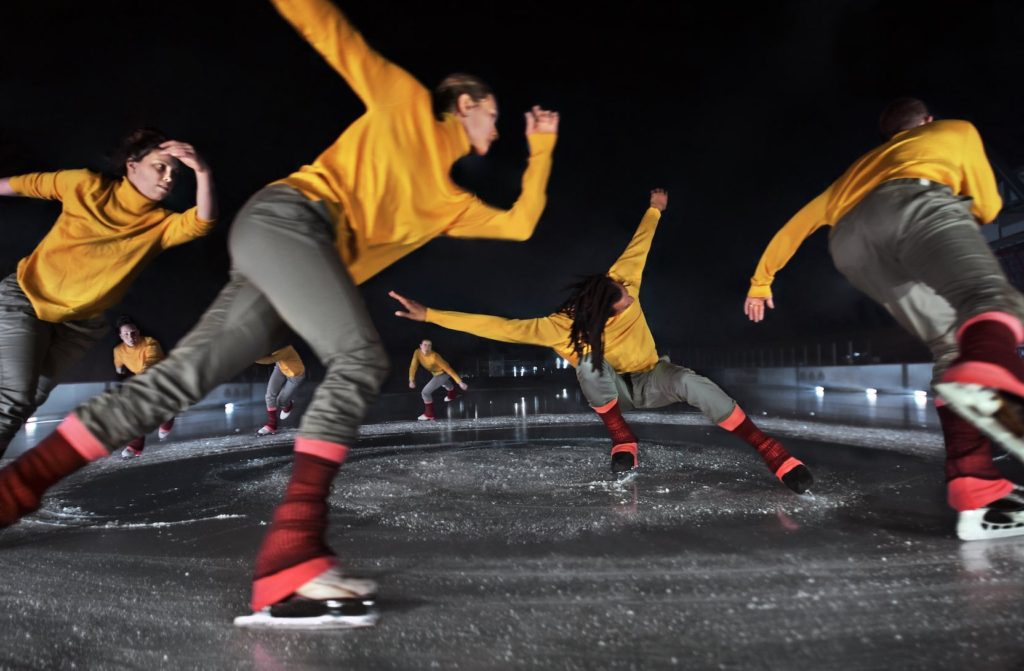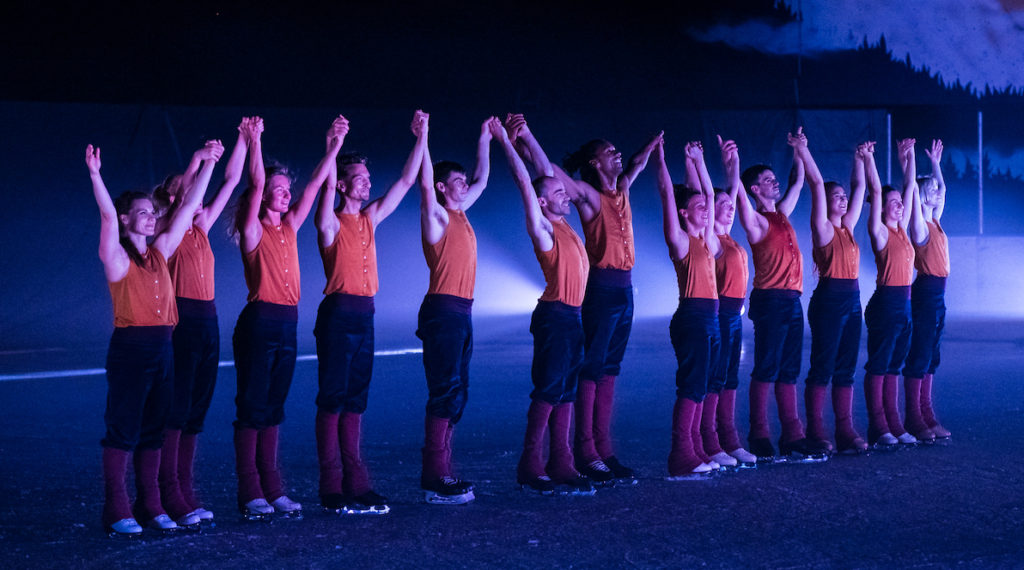One of the Flock: Performing in Le Patin Libre’s Murmuration - Vancouver Ballet Society
- Home
- Features 2020 - 2023
- One of the Flock: Performing in Le Patin Libre’s Murmuration

By Jenn Edwards
Le Patin Libre was on the verge of presenting their first piece for a large ensemble, a cast of 15 skaters from all over Europe and North America, when COVID hit, and the 2020 premiere was cancelled. As one of those 15 skaters, I was disheartened, having been part of the creative process since 2018. Then, after a two-year hiatus, Théâtre de la Ville premiered Murmuration in Paris last June, with more European touring planned for this October, including dates in Frankfurt and Darmstadt for Germany’s Rhein-Main Dance Festival.
The contemporary skating company began in the early 2000s as a group of punk ex-figure skaters, performing on outdoor rinks and hosting raucous skating parties in Montreal. Led by Alexandre Hamel, they’ve now established themselves as seasoned contemporary artists, touring constantly, and creating full-length works in partnership with presenters like Canada’s National Arts Centre, Danse Danse in Montreal, and Dance Umbrella in the UK. Vertical Influences and Threshold, both performed by five skaters, have been presented hundreds of times around the globe.

Murmuration was choreographed jointly by core company members Hamel, Pascale Jodoin, and Samory Ba, over several intensive residencies in Quebec and France. All three perform in the show, which features a musical score by Jasmin Boivin, another long term skater in the company.
The main ingredient in any Le Patin Libre show is glide. It’s the element that separates ice skating from dance — the possibility of locomotion through space without any body movement. While it fuels all of their creative processes, Murmuration is their first exploration of glide in a large group context. Previous works have placed the audience at ice level, but Murmuration is meant to be viewed from above, high up in the bleachers, giving the impression of one large entity moving together, rather than 15 individual bodies. The show is inspired by the movements of birds, and much of the choreography is based on algorithms, meaning there are sets of rules to follow, with the arc of the show set. Each performance, though, will be slightly different: as performers, we’re constantly making minute adjustments and calculations to create a collective impression.
This type of choreography demands a certain state of body in stark contrast to traditional figure skating. In the semi-improvised sections, we have to be ready at any moment to change direction, to shift our weight, or to weave in between two other bodies. The movement requires being grounded, spine curved forward, closer to how a hockey player skates. This is not an aesthetic choice, it’s simply necessary for the tasks we’re given as performers.

After I began working with the company in 2018, it took a while to shake the uprightness I had spent my youth cultivating as a competitive figure skater, as well as the performance style that persists in that world. I trained from an early age at a figure skating academy, Burnaby, BC’s Centre of Excellence, before transitioning to contemporary dance in university. In a competition you’re out there alone, or maybe with one other person, to fill up a giant, freezing-cold stage with your energy. Everything is projected outward, to reach the audience, and make an impression on the judges.
Skating in Murmuration is almost the exact opposite experience. I don’t have time to think about smiling for the back row of the bleachers. I have to be so present and engaged with my cast mates, feeling where they’re going next and calculating where I need to be in response. There’s no time to put another layer of performance on top of that. The engagement is the performance. The piece is a world we live inside of, rather than a pretty picture on display.

